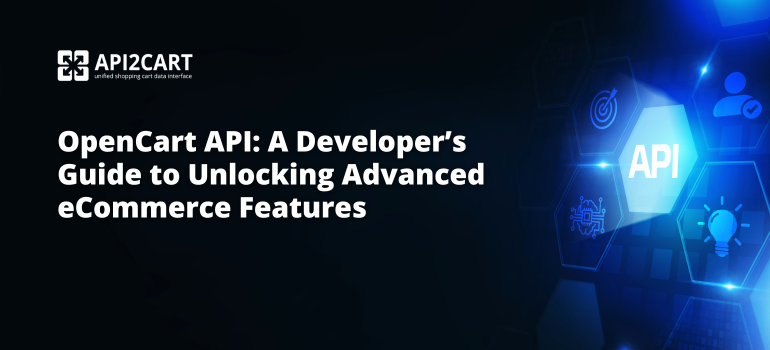
EDI vs API is a decision most B2B and eCommerce engineering teams face when designing data exchange between systems. For developers, the core trade‑off is batch, standardized document transfer (EDI) versus real‑time, resource‑oriented exchange (API). Choosing the right approach impacts latency, error handling, onboarding effort, and long‑term scalability.
Companies have been leveraging electronic data exchange technology since the 1970s. Today there are multiple ways to automate business communication, transactions, and data interchange across trading, logistics, manufacturing, and retail. Below we break down how EDI and modern APIs differ, when each makes sense, and how a unified API can accelerate integrations for eCommerce software.
eCommerce Basics
The umbrella term “eCommerce” covers paperless business interactions over networks: EDI, B2B integration, API integration, etc. While related, they are not the same and require different technical stacks and operational practices.
- B2C (Business‑to‑Consumer) — a business sells directly to end consumers.
- B2B (Business‑to‑Business) — data exchange, services, or sales between businesses (e.g., retailer ↔ supplier, 3PL ↔ brand, SaaS ↔ merchant).
The eCommerce ecosystem is highly interdependent. To keep all parties in sync, companies need data‑level integration — automated exchange of data and documents between systems.
EDI vs API: Key Differences
There are two primary technologies for electronic data exchange in eCommerce: EDI (Electronic Data Interchange) and APIs. Here is how they compare from an engineering standpoint:
| Dimension | EDI | API |
|---|---|---|
| Transmission model | Batch, document-centric (ANSI X12, EDIFACT) | Real-time request/response & webhooks; resource-centric (JSON/XML; REST/GraphQL) |
| Latency | Minutes–hours (windowed) | Seconds (near real time) |
| Onboarding | Maps, VANs, translator setup, per-partner specs | Auth (OAuth/API key), schema adherence, rate limits |
| Error handling | Functional acks (997/CONTRL), batch reprocessing | HTTP status codes, retries, idempotency keys, webhooks |
| Standards | Rigid, legacy but mature | Flexible, evolving, faster iteration |
| Typical use cases | Large retailers, legacy ERPs, ASN/Invoice compliance | eCommerce platforms, SaaS apps, real-time sync, analytics |
EDI
Electronic Data Interchange has powered system‑to‑system communication between carriers, shippers, retailers, and 3PLs since the 1970s. EDI defines standardized documents (invoices, purchase orders, shipping notices) and exchanges them in batches. Its strengths are standardization and predictability; downsides include higher onboarding friction, delayed confirmations, and limited real‑time visibility and analytics compared to modern APIs.
APIs
APIs provide seamless connectivity between applications. With API integration, systems exchange data automatically and in real time. No manual message crafting or waiting for batch windows — applications read/write resources on demand, trigger webhooks, and reconcile state programmatically.
For eCommerce, API integration with shopping carts has become an integral part of modern B2B software. It powers and streamlines inventory, shipping, order management, mobile app builders, data feed management programs and many other eCommerce software systems.
When to Choose EDI vs API for eCommerce B2B
- Use EDI when you must comply with legacy retailer mandates (e.g., ASN/EDI 856), exchange large batch documents with established VAN workflows, or integrate deeply with traditional ERPs that already run on EDI.
- Use APIs when you need real‑time synchronization (orders, inventory, pricing), faster partner onboarding, granular error handling, and scalable integrations with platforms like Shopify, Magento, WooCommerce, BigCommerce, marketplaces, etc.
- Hybrid is common: keep mandated EDI flows with specific partners and use APIs for the rest (especially for multi‑cart integrations and modern SaaS).
Unifying Cart Integrations via API2Cart
If you run a B2B eCommerce software product, integrating individually with every shopping cart is costly and time‑consuming. API2Cart provides a single, unified API to connect your application to 60+ eCommerce platforms and marketplaces at once. We maintain the connectors and version changes so your team focuses on product, not plumbing.
With 100+ methods, you can work with key entities: products (product.list/product.count/product.info/product.add/product.update/product.delete), orders (order.list/order.info/order.add/order.update), shipments (order.shipment.add/order.shipment.update/order.shipment.tracking.add), customers (customer.list/customer.count/customer.add/customer.info), and more — through one consistent model.
Conclusion
EDI vs API is not a purely theoretical question — it affects engineering velocity, data freshness, and partner onboarding. Many teams adopt a pragmatic hybrid: keep EDI where mandated, use APIs where speed and flexibility matter. If your roadmap includes multi‑platform eCommerce integrations, a unified API can compress timelines dramatically.
Ready to accelerate your integrations? Start free trial and see how API2Cart streamlines access to 60+ platforms with a single integration.



